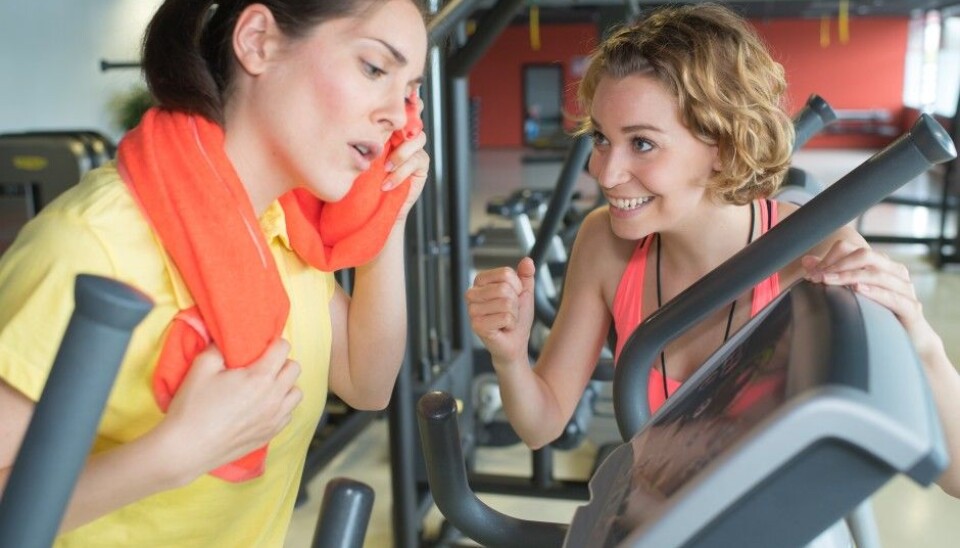
Out of shape gym users overrate their fitness
The rose bush does have thorns, but from another perspective the thorn bush has roses.
Only one in three Norwegians fulfils the Norwegian Institute of Public Health’s recommendations for physical activity. The institute warns that this failure to use their bodies raises the risk of disease, including heart attacks, cancer and diabetes.
Many of us join gyms that have monthly fees as an incitement to rise from our recliners or get off our sofas. The intention is to start living a more active life. Still, many end up among the ranks of a gym’s inactive benefactors – paying dues while going back to being a couch potato.
“Half stop exercising completely within the first year,” says Christina Gjestvang.
She is one of the researchers at the Norwegian School of Sport Sciences who wished to find out what characterised those who start training and then let things slide, and give up.
The first step was to chart the aerobic fitness of members of 125 new customers who were about to start working out at a gym.
From sloths to the sporting elite
This is no easy task. A person’s aerobic fitness should preferably be tested in a laboratory with the subject jogging on a treadmill, wired to electronic pulse monitors and a mask linked to a hose that helps measure maximum oxygen intake.
So the researchers operated with an easy questionnaire that would have the same purpose. They asked a group of starters how strong they thought their fitness was on a scale of 1 to 20.
They were asked specifically about what activity they could tackle for a half-hour. Level 1 represented sitting completely still, whereas any in the 20 bracket would be training on an elite athletic level.
Then the participants filed in for testing of their actual aerodynamic capabilities, their real fitness on a treadmill in the lab of the Norwegian School of Sport Sciences.
“On the average they overestimated their own physical form by 17 percent,” says Gjestvang.
This is about the same as two steps on the 1– 20 scale. Women overestimated their fitness slightly more than men did, but that difference was too negligible for comment by the researchers.
Can be useful for an overview
“This scale for quantifying one’s own fitness on the individual level is inaccurate,” explains Gjestvang.
Yet she thinks the simple questionnaire can be useful in some instances despite a few of the participants showing very unrealistic estimates of their fitness. It could be used when researchers or public authorities need a physical fitness overview of a larger population or group.
“It’s a cheap alternative to testing in a lab. It’s time-saving, both for the individual test person and the researcher sending out questionnaires,” says Gjestvang.
“But of course you have to be aware of this tendency to overestimate fitness. Overestimates and underestimates are always something to account for in any questionnaires, no matter what your query.”
Gjestvang also thinks that persons who are well fit tend to be closer to their real condition in their answers. The participants in this study were completely untrained when they started at the gym.
“I’m pretty certain that people who are fit would be closer to the mark in their estimates,” she says.
-------------------------------------
Read the Norwegian version of this article at forskning.no.
Translated by: Glenn Ostling
Scientific links
- Gjestvang, Stensrud and Haakstad: How is rating of perceived capacity related to VO2max and what is VO2max at onset of training? BMJ Open sport & exercise medicine (2017)
- Health report: Fysisk aktivitet. Norwegian Institute of Public Health, 2017. [in Norwegian]
































